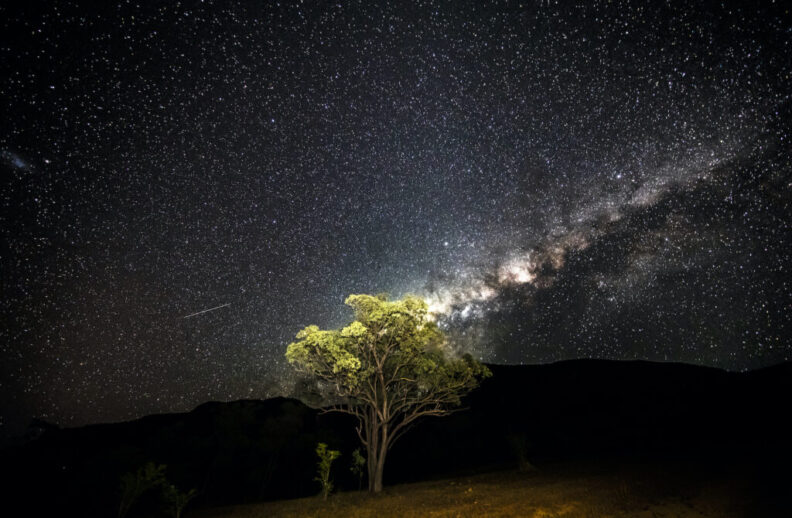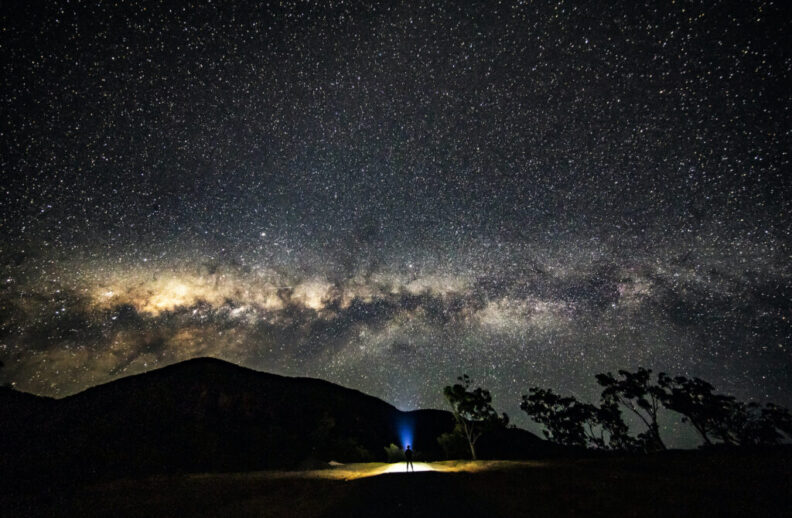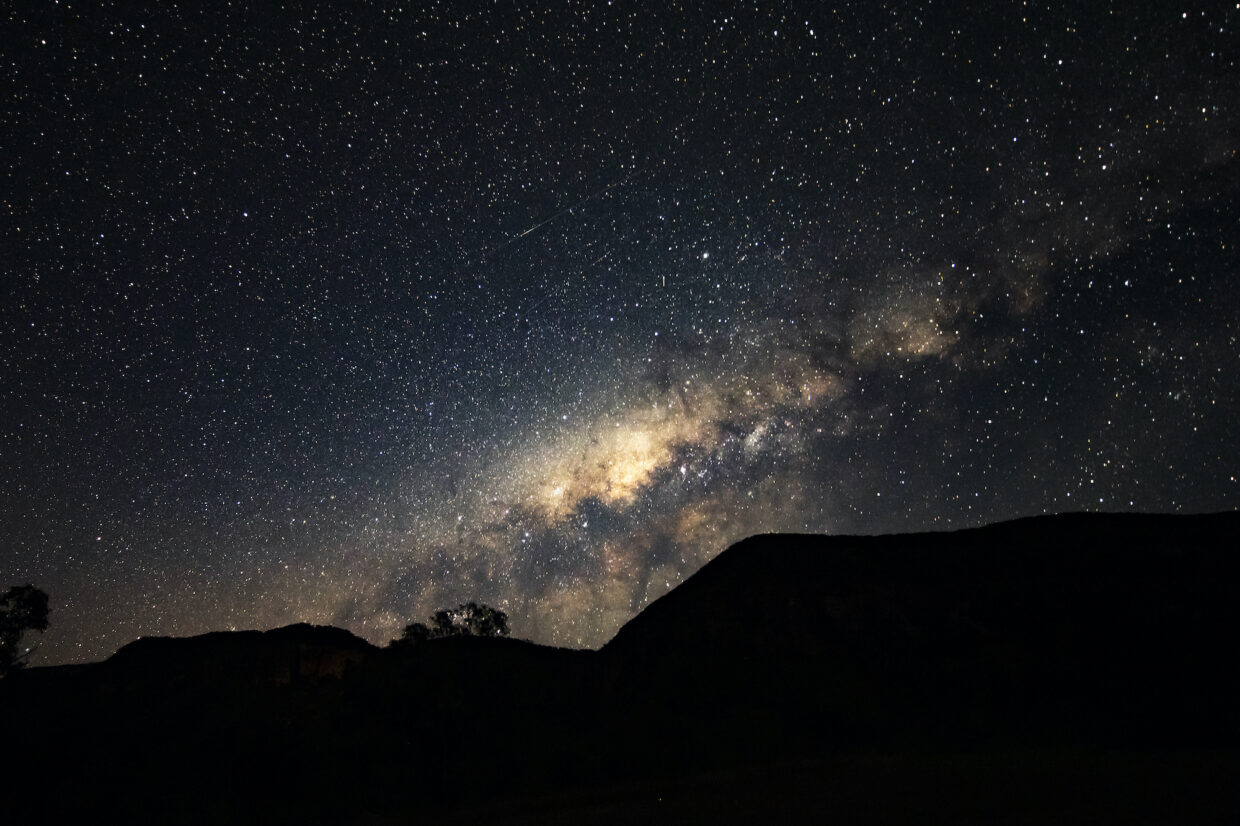You’ve not seen the stars until you’ve seen them from the outback. Australia’s more remote landscapes lack light pollution (street lights, cars etc), creating the perfect setting for ‘dark skies’ that allow the stars to really put on a show. When there’s just you and the bright lights in the sky above, turn your gaze up and track these five constellations.
Orion the Hunter
Start off with one of the most recognisable constellations. Orion the Hunter, which contains the three stars forming Orion’s Belt, is a quick find during summer in north QLD. The Yolngu people of Northern Australia believe the three stars represent three brothers punished for eating forbidden fish. Keep an eye out for the Betelgeuse star, the constellation’s very own red giant.

Scorpius
Between May to November, keep your eyes on Scorpius, the constellation that represents a scorpion. Also described as a coat hanger hook with an anchor, legend has it the constellation rose up as a scorpion to chase Orion across the sky. Though from the naked eye it looks like a small cluster of stars, these clusters are really hundreds and hundreds of stars.

Centaurus
Look to the Southern Cross, then above to spot Centaurus whose feet make up the Pointers. This mythical creature is half man, half horse and contains eight named stars. When you’re in north Queensland, Spring and Summer are the best times of year to see this beast in all its glory.
Canis Major
More commonly known by its Latin translation, The Great Dog, Canis Major sits tucked in next to Orion as his ‘Greater Dog’. The Canis Minor, little dog, is nearby. The constellation clusters around Sirius, the brightest star in the sky, and also contains a Dwarf galaxy, a Messier 41, and Thor’s Helmet, which is an emission nebula. Spot it during winter when you’re in north Queensland.
Pavo
Pavo, aka The Peacock, has one blue-white subgiant star, also named The Peacock and is best seen in Summer from north Queensland. It’s believed the constellation is named for the peacocks who drew Hera’s chariot in Greek mythology, though some also believe it is named after Java green peacocks Dutch navigators spotted in the East Indies.
Whether it’s with the Mt Mulligan Lodge telescope and a wine in hand, or when sitting by the crackling outback fireplace, you’ll have plenty to spot when you go stargazing.
